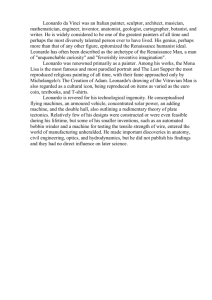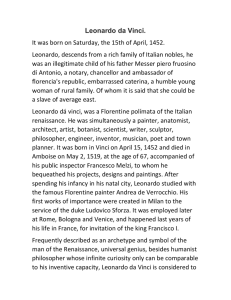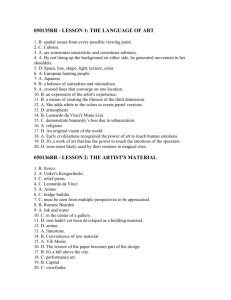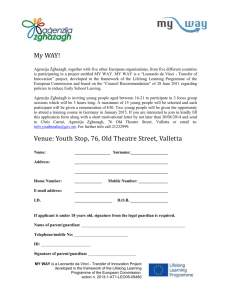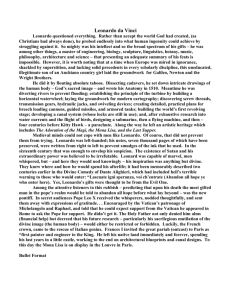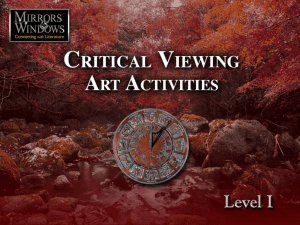LEONARDO DA VINCI
advertisement
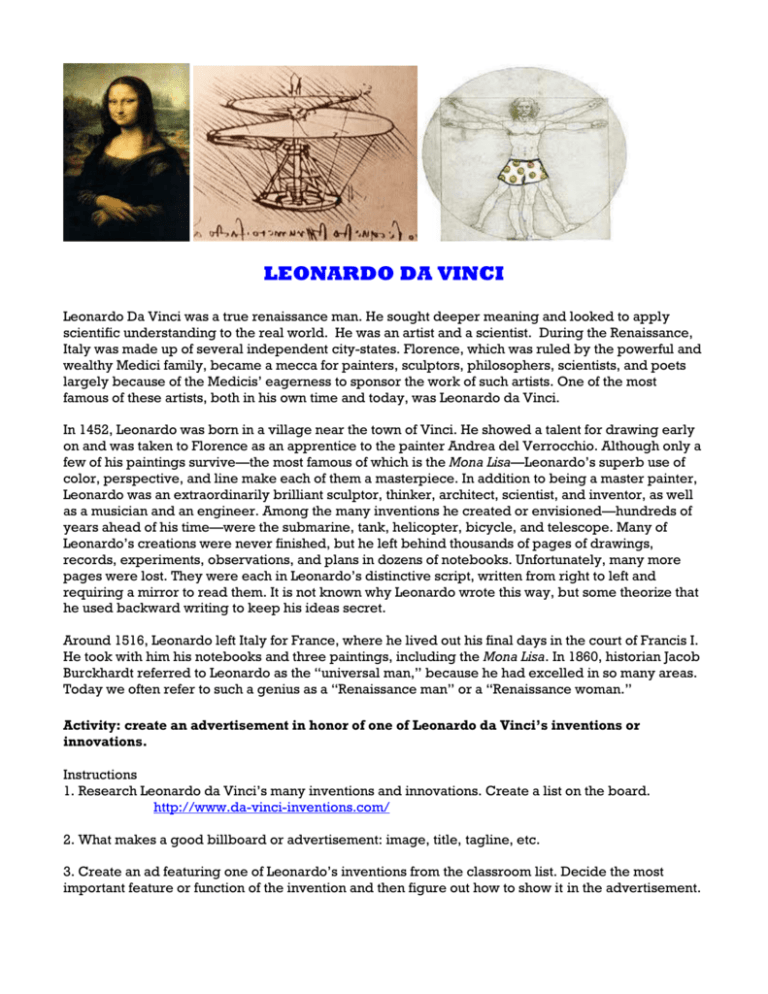
LEONARDO DA VINCI Leonardo Da Vinci was a true renaissance man. He sought deeper meaning and looked to apply scientific understanding to the real world. He was an artist and a scientist. During the Renaissance, Italy was made up of several independent city-states. Florence, which was ruled by the powerful and wealthy Medici family, became a mecca for painters, sculptors, philosophers, scientists, and poets largely because of the Medicis’ eagerness to sponsor the work of such artists. One of the most famous of these artists, both in his own time and today, was Leonardo da Vinci. In 1452, Leonardo was born in a village near the town of Vinci. He showed a talent for drawing early on and was taken to Florence as an apprentice to the painter Andrea del Verrocchio. Although only a few of his paintings survive—the most famous of which is the Mona Lisa—Leonardo’s superb use of color, perspective, and line make each of them a masterpiece. In addition to being a master painter, Leonardo was an extraordinarily brilliant sculptor, thinker, architect, scientist, and inventor, as well as a musician and an engineer. Among the many inventions he created or envisioned—hundreds of years ahead of his time—were the submarine, tank, helicopter, bicycle, and telescope. Many of Leonardo’s creations were never finished, but he left behind thousands of pages of drawings, records, experiments, observations, and plans in dozens of notebooks. Unfortunately, many more pages were lost. They were each in Leonardo’s distinctive script, written from right to left and requiring a mirror to read them. It is not known why Leonardo wrote this way, but some theorize that he used backward writing to keep his ideas secret. Around 1516, Leonardo left Italy for France, where he lived out his final days in the court of Francis I. He took with him his notebooks and three paintings, including the Mona Lisa. In 1860, historian Jacob Burckhardt referred to Leonardo as the “universal man,” because he had excelled in so many areas. Today we often refer to such a genius as a “Renaissance man” or a “Renaissance woman.” Activity: create an advertisement in honor of one of Leonardo da Vinci’s inventions or innovations. Instructions 1. Research Leonardo da Vinci’s many inventions and innovations. Create a list on the board. http://www.da-vinci-inventions.com/ 2. What makes a good billboard or advertisement: image, title, tagline, etc. 3. Create an ad featuring one of Leonardo’s inventions from the classroom list. Decide the most important feature or function of the invention and then figure out how to show it in the advertisement.
